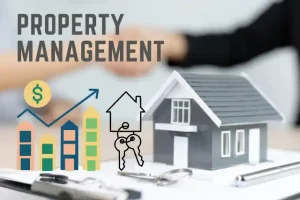Investing in real estate can be a lucrative venture, but it requires careful planning and strategic decision-making. It can also be both exciting and daunting.
Whether you’re a seasoned investor or just dipping your toes into the property market, having a solid strategy is crucial. One of the keys to success in real estate investment is having effective strategies in place.
In this blog post, we’ll explore three popular real estate investment strategies: flipping houses, the BRRRR method, and buy-and-hold. Each strategy offers its own unique benefits and challenges, and understanding the differences between them can help investors make informed decisions to maximize their returns.
Mastering Real Estate Investment Strategies

A. Flipping Houses / Properties: Quick Profits through Strategic Investments
What’s Flipping?

Flipping is a real estate investment strategy where investors purchase properties intending to quickly renovate and resell them for a profit. This strategy appeals to investors looking for quick returns on their investments.
The Steps:
- Buy: Look out for distressed properties with potential—the ones that need proper fixing.
- Rehab: Roll up your sleeves and renovate. Fix the leaky roof, update the kitchen, and slap on a fresh coat of paint.
- Sell: Once your masterpiece is ready, put it on the market. Channel your inner real estate agent and find a buyer who falls head over heels for your revamped abode.
Why Flipping?
- Quick Profits: Flipping can yield fast cash. But remember, it’s not all sunshine and rainbows. Renovations can be unpredictable, like a surprise leak during a rainstorm.
One of the advantages of flipping is the potential for high profits in a relatively short amount of time. By purchasing distressed properties at a discount, investors can add value through renovations and upgrades, and then sell the properties at a higher price.
However, flipping also comes with its own set of challenges. It requires careful market research to identify undervalued properties with the potential for profitable flips. Additionally, managing renovations and finding buyers can be time-consuming and financially risky.
Pros:
- Potentially High Returns: Flip the right property at the right time, and you could see significant profits within months.
- Flexibility: No long-term commitment. Buy, renovate, sell, and repeat!
Cons:
- Risky: Market fluctuations and renovation mishaps can eat into profits.
- Requires Expertise: You need renovation know-how and market timing skills.
RELATED: A Beginner’s Guide To Best Real Estate Investment Strategies To Get Started
B. BRRRR Method: Building Wealth Through Smart Investments
What’s BRRRR?

BRRRR stands for Buy, Rehab, Rent, Refinance, Repeat, and is a popular real estate investment strategy that focuses on long-term wealth building through strategic investments.
The Steps:
- Buy: Purchase a property (preferably at a discount).
- Rehab: Spruce it up. Make it shine.
- Rent: Find tenants. Collect rent. Cha-ching!
- Refinance: Tap into that sweet equity. Get a loan based on the property’s new value.
- Repeat: Rinse and repeat the process. Scale up. Build wealth.
It’s a strategic move, transforming undervalued properties into income-generating rentals, all while building equity and freeing up capital for further investment.
Why BRRRR?
- Long-Term Gains: BRRRR is like planting money trees. You nurture them (buy, rehab, rent), and they grow (refinance, repeat). Over time, you accumulate more properties and more income.
One of the key benefits of the BRRRR method is its focus on cash flow. By purchasing properties below market value, renovating them to increase their value, and renting them out to tenants, investors can generate consistent rental income.
Another advantage of the BRRRR method is the ability to leverage. By refinancing properties once they’ve been renovated and rented out, investors can pull out equity to fund additional investments, allowing them to scale their portfolios over time.
Pros:
- Passive Income: Rental properties provide steady cash flow.
- Equity Building: Renovations increase property value, boosting your net worth.
- Leveraging Finance: Refinancing unlocks capital for more investments.
Cons:
- Complex: Requires knowledge of construction, financing, and tenant management.
- Time Commitment: Renovations and tenant management demand effort.
C. Buy-and-Hold Strategy: Long-Term Steady and Passive Income
What’s Buy-and-Hold?

Imagine you’re collecting Pokémon cards, but instead of Pikachu, you’re collecting rental properties.
Buy-and-hold is about acquiring properties and keeping them for the long haul. You become a landlord.
Buy-and-hold investing is a real estate strategy that involves purchasing properties with the intention of holding onto them for the long term. This strategy appeals to investors looking for stable, passive income and long-term appreciation.
The Steps:
- Buy: You purchase the property.
- Hold: You Hold it for a long time collecting rent, and let it compound.
Why Buy-and-Hold?
One of the main advantages of buy-and-hold investing is its predictability. Unlike flipping, which relies on quick turnarounds and market timing, buy-and-hold investing focuses on long-term growth and income generation.
Additionally, buy-and-hold investing offers tax benefits for investors. Rental income from investment properties is typically taxed at a lower rate than other forms of income, and investors can also take advantage of depreciation deductions to offset their taxable income.
Pros:
- Passive Income: Renters pay your mortgage, creating a regular handy income stream.
- Long-Term Appreciation: Properties’ value appreciates over time, boosting your net worth. Think of it as compound interest for real estate.
- Tax Benefits: Rental income comes with tax advantages.
Cons:
- Lower Initial Returns: Compared to flipping, initial returns are slower.
- Tenant Management: Dealing with tenants can be time-consuming and require specific skills.
Comparing Strategies: Flipping vs. BRRRR vs. Buy-and-Hold
Each real estate investment strategy offers its own set of advantages and challenges, and the right strategy for you will depend on your investment goals, risk tolerance, and available resources.
Flipping is ideal for investors looking for quick profits and who are willing to take on higher levels of risk.
BRRRR is well-suited for investors looking for long-term wealth-building and passive income, with the ability to leverage their investments to scale their portfolios over time.
Buy-and-hold investing is best for investors seeking stability and predictability, with the potential for long-term appreciation and tax benefits.
So, which strategy reigns supreme? The truth is, there’s no one-size-fits-all answer. Consider these factors:
- Risk Tolerance: Flipping is riskier, while buy-and-hold offers stability.
- Desired Return: Flipping offers potentially high but short-term gains, while buy-and-hold provides steady, long-term growth.
- Effort and Time Commitment: Flipping requires hands-on involvement, while buy-and-hold can be more passive.
- Financial Resources: Flipping might require less upfront capital, while BRRRR leverages financing for growth.
Conclusion
In conclusion, real estate investment offers a variety of strategies for investors to choose from, there’s no one-size-fits-all strategy. Some investors flip, others BRRRR, and some cozy up with their buy-and-hold properties. Remember: Each strategy has its pros and cons and challenges. It’s important to carefully consider your options and choose the strategy that aligns with your investment goals. By understanding the differences between these strategies and leveraging their strengths, you can maximize your returns and build a successful real estate investment portfolio.
So, put on your investor hat, crunch the numbers, and find what suits your financial goals.
Now, go forth and conquer your real estate dreams!
Disclaimer: This blog post is for informational purposes only. Always consult a real estate professional before making investment decisions.


